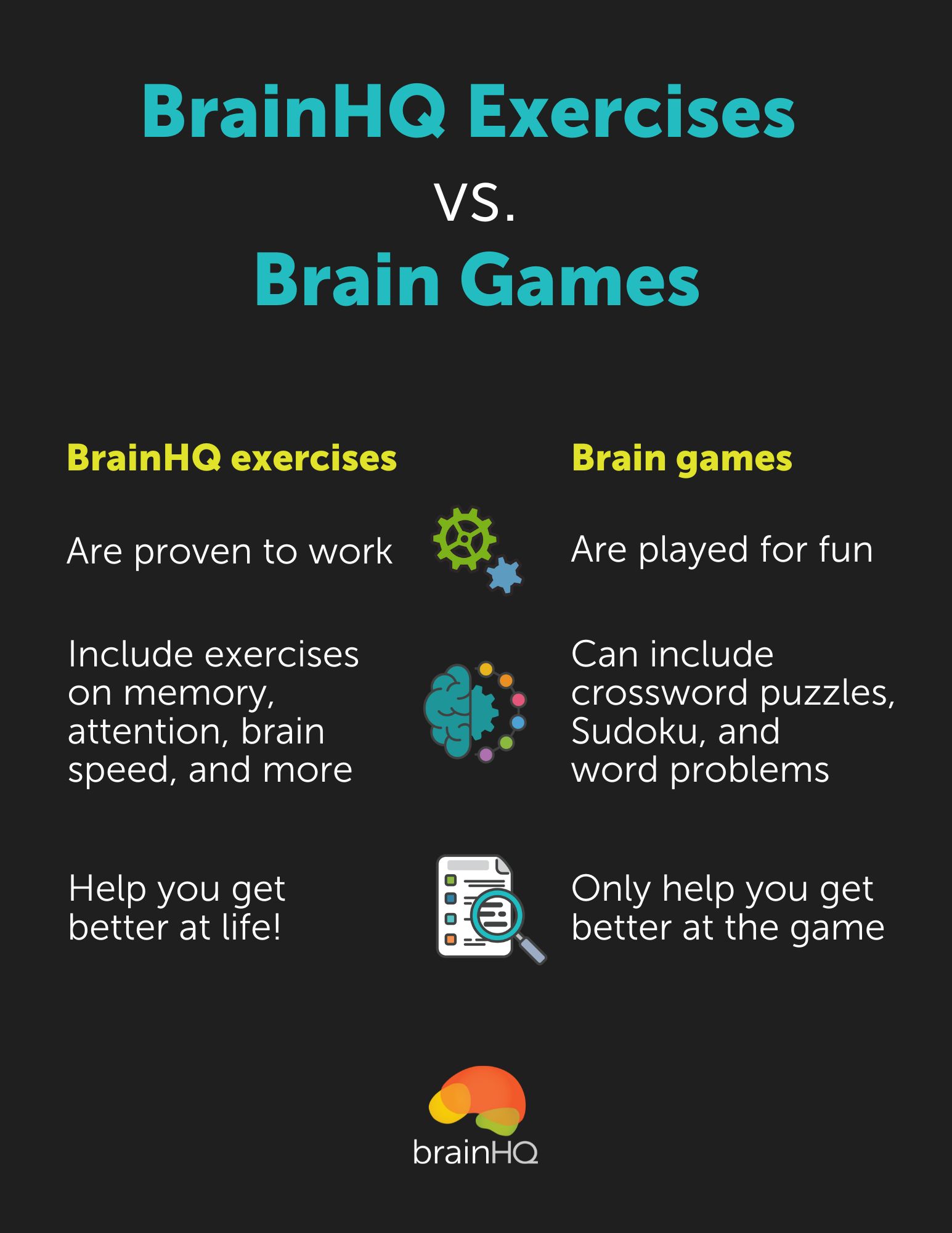These insider tips will help you get the most out of your BrainHQ brain-training routine.
Now that you’ve signed up for BrainHQ, congratulations! You’re one step closer to sharpening major parts of your brain, including your memory, attention span, brain speed, and more.
Think of BrainHQ as the most popular gym in your neighborhood. There are some people on treadmills, some bench-pressing, and others using free weights. But they’re all in there for the same reason: to get in shape and stay healthy. And that’s what BrainHQ is all about: bringing your brain fitness — your brain training — to the next level. The more you work out your brain, the healthier it’ll be.
But like any gym membership, if you don’t use it, you’ll have a tough time hitting your fitness goals. Not sure how to get started? We’ve got insider tips from Michael Merzenich, Ph.D., professor emeritus at University of California, San Francisco, and chief science officer of Posit Science, the creators of BrainHQ. He’s also a BrainHQ user himself.
Here are six key tips that’ll help you get the most out of BrainHQ’s science-backed brain-training program.
Tip #1: BrainHQ’s brain exercises target specific aspects of your brainpower.
Before diving into BrainHQ, it can be helpful to know what the program includes. It features more than two dozen exercises organized into six categories:
- Attention (exercises that help you stay alert and focus on what matters)
- Brain speed (exercises that help you process hearing and visual signals better)
- Memory (exercises that sharpen your ability to create clearer memories and recall them better)
- People skills (exercises that help you retain information about people you interact with)
- Intelligence (exercises that improve your ability to use information and solve problems)
- Navigation (exercises that help you move around in space better)
Learn more about the specific exercises. You’ll find information on what each exercise is, the scientific principles behind it, and the cognitive skills it challenges.
Your brain health matters!
BrainHQ rewires the brain so you can think faster, focus better, and remember more. And that helps people feel happier, healthier, and more in control. Sign up today!
Tip #2: The first three training sessions are designed specifically to teach you how to use the exercises — while starting your brain training.
When you start BrainHQ for the first time, you’ll answer a few easy questions to help BrainHQ customize the training for you. One question asks you where you want to start — with memory, attention, or brain speed. You’ll do all the exercises eventually, but BrainHQ wants you to start with the area that is most important to you.
That first training session is quick; most people complete it in just about five minutes. And the exercise is customized to teach you how to do a brain training exercise, with step-by-step instructions, including an audio narrator if you like.
In the second and third sessions, you’ll learn a new exercise each time and also return to the ones you learned previously, to give you additional practice and begin the process of brain change.
Tip #3: BrainHQ is all about giving your brain a full workout.
Although the exercise categories described above are distinct, they rely on one another to work properly, explains Dr. Merzenich. “For example, navigation or intelligence — those skills are supported by brain speed, attention, and memory.” So, even if you have a particular area you want to focus on, Dr. Merzenich recommends doing a mix of all the exercises.
Tip #4: BrainHQ brain training can be customized to your personal needs.
BrainHQ gives you two paths to follow with its science-backed exercises:
- Most people use the personal trainer web tool, where BrainHQ serves up exercises that are right for you, based on how you’ve done so far.
- If you’re feeling adventurous, you can pick exercises that you prefer from the full menu.
The personal trainer tool can be further customized by picking a training focus, including those focused on specific cognitive domains such as attention, memory, and speed; those focused just on vision or hearing; or even those focused on high achievers or sports.
Don’t worry about making the wrong choice up front. Each time you log into BrainHQ, you can continue the personal trainer plan you selected or explore the exercises on your own.
“When you’re really satisfied with how you are doing with one program, move to another one,” Dr. Merzenich says.
Tip #5: BrainHQ exercises adapt to your skill level.
Just as a fitness trainer might speed up your treadmill or add some weight to your barbells, BrainHQ adapts to your skill level. If you’re doing well at a specific brain exercise, it will get a little bit harder. If you’re struggling, it will get a little easier. In this way, BrainHQ adapts to your unique brain.
“The whole idea is to find your limit and to slowly drive to a higher level, just like you would in the gym,” says Dr. Merzenich.
Tip #6: BrainHQ allows you to choose your own difficulty level.
You can also customize your training challenge and training depth. These settings will determine how much time it takes you to “master” an exercise. Here’s a little preview of how it works — you know, for when you eventually become a brain fitness fanatic:
- Training challenge: To “pass” a level in an exercise, you must earn a certain number of stars. You can decide how many stars you need to earn to move to the next level. Options range from easy (two stars) to expert (five stars). Dr. Merzenich recommends setting everything to four or five stars to make sure you are challenging yourself. (Of course, if that’s too difficult, you can lower the number of stars you have to earn at any time — no sweat!)
- Training depth: This refers to the number of levels you must complete to move on from an exercise. The default setting is 10 levels. But you can set it to more levels if you want to spend more time on a certain exercise. (Or less levels if you want more variety.)
Tip #7: BrainHQ brain training is all about consistency.
Remember: You’ll only start getting real results when you put that gym membership to use. So, stick with BrainHQ to see all the benefits to your brain come to fruition.
But Dr. Merzenich points out one key difference between brain training and physical training: When you’re hitting the gym, you usually need “rest days” between workouts to let your body recover, but that’s not the case with brain training. In his experience, your brain will actually make more progress if you do the exercises several days in a row. In fact, he recommends a brain-training regimen that spans at least three days in a row.
And, Dr. Merzenich says, the key is repeating the same exercises each day. “You want to come back to the same exercise, because that’s what the brain is remembering and working on.”
So, what’s the optimal amount of brain fitness to do on BrainHQ every day? That’s up to you, Dr. Merzenich says. What matters most is the total time you spend. If your goal is to spend 10 hours on an exercise, it doesn’t matter if you do it in 10, 30, or 40 days, he says.
But if you’re looking for a goal to work up to, Dr. Merzenich says: “If you can do a half hour a day, that’s great. And it’ll be a little more fun because there’s a little more variety.”
If you have time for only 10 or 15 minutes a day, that’s fine too. “What really matters is that you get back to it often enough so that you make progress.”
Looking for more ways to build a healthy brain? Try BrainHQ, a brain-training program designed by leading scientists that rewires the brain to help you think faster, focus better, and remember more. And it may be included at no cost with your Medicare Advantage plan. Check your eligibility today.








